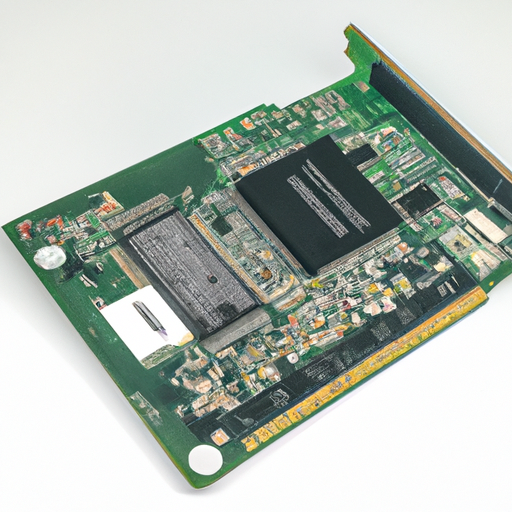

Digital Signal Processors (DSPs) are specialized microprocessors that are designed to efficiently process digital signals in real-time. These processors are commonly used in a wide range of applications, including audio and video processing, telecommunications, radar systems, medical imaging, and more. DSPs offer a number of key features that make them ideal for these types of applications.

Another important feature of DSPs is their ability to handle multiple data streams simultaneously. Many DSPs are equipped with multiple processing cores or pipelines, allowing them to process multiple data streams in parallel. This makes DSPs well-suited for applications that require processing of multiple signals at the same time, such as multi-channel audio processing or multi-sensor data fusion.
DSPs also typically include specialized hardware accelerators for common signal processing tasks, such as multiply-accumulate units (MACs) for fast multiplication and addition operations. These hardware accelerators help to improve the performance of the DSP and reduce the amount of processing time required for complex operations.
In addition to their processing capabilities, DSPs also offer a number of features that make them easy to program and integrate into a system. Many DSPs come with development tools and libraries that simplify the programming process, allowing developers to quickly and easily implement signal processing algorithms. DSPs also typically include a variety of input and output interfaces, such as analog-to-digital converters (ADCs) and digital-to-analog converters (DACs), that make it easy to connect the DSP to external sensors and actuators.
One of the key advantages of DSPs is their flexibility and programmability. Unlike fixed-function signal processing hardware, such as application-specific integrated circuits (ASICs) or field-programmable gate arrays (FPGAs), DSPs can be reprogrammed to perform different signal processing tasks. This makes DSPs ideal for applications that require frequent updates or changes to the signal processing algorithms.
DSPs also offer a number of power-saving features that make them ideal for battery-powered or low-power applications. Many DSPs include power management features, such as dynamic voltage and frequency scaling, that allow the processor to adjust its power consumption based on the processing workload. This helps to extend the battery life of portable devices and reduce the overall power consumption of the system.
Overall, DSPs offer a wide range of features that make them ideal for a variety of signal processing applications. From their high-speed processing capabilities to their flexibility and programmability, DSPs are a versatile and powerful tool for developers working on signal processing systems. Whether you are designing a new audio processing system, implementing a radar signal processor, or developing a medical imaging device, a DSP can provide the processing power and features you need to bring your application to life.
Digital Signal Processors (DSPs) are specialized microprocessors that are designed to efficiently process digital signals in real-time. These processors are commonly used in a wide range of applications, including audio and video processing, telecommunications, radar systems, medical imaging, and more. DSPs offer a number of key features that make them ideal for these types of applications.

Another important feature of DSPs is their ability to handle multiple data streams simultaneously. Many DSPs are equipped with multiple processing cores or pipelines, allowing them to process multiple data streams in parallel. This makes DSPs well-suited for applications that require processing of multiple signals at the same time, such as multi-channel audio processing or multi-sensor data fusion.
DSPs also typically include specialized hardware accelerators for common signal processing tasks, such as multiply-accumulate units (MACs) for fast multiplication and addition operations. These hardware accelerators help to improve the performance of the DSP and reduce the amount of processing time required for complex operations.
In addition to their processing capabilities, DSPs also offer a number of features that make them easy to program and integrate into a system. Many DSPs come with development tools and libraries that simplify the programming process, allowing developers to quickly and easily implement signal processing algorithms. DSPs also typically include a variety of input and output interfaces, such as analog-to-digital converters (ADCs) and digital-to-analog converters (DACs), that make it easy to connect the DSP to external sensors and actuators.
One of the key advantages of DSPs is their flexibility and programmability. Unlike fixed-function signal processing hardware, such as application-specific integrated circuits (ASICs) or field-programmable gate arrays (FPGAs), DSPs can be reprogrammed to perform different signal processing tasks. This makes DSPs ideal for applications that require frequent updates or changes to the signal processing algorithms.
DSPs also offer a number of power-saving features that make them ideal for battery-powered or low-power applications. Many DSPs include power management features, such as dynamic voltage and frequency scaling, that allow the processor to adjust its power consumption based on the processing workload. This helps to extend the battery life of portable devices and reduce the overall power consumption of the system.
Overall, DSPs offer a wide range of features that make them ideal for a variety of signal processing applications. From their high-speed processing capabilities to their flexibility and programmability, DSPs are a versatile and powerful tool for developers working on signal processing systems. Whether you are designing a new audio processing system, implementing a radar signal processor, or developing a medical imaging device, a DSP can provide the processing power and features you need to bring your application to life.